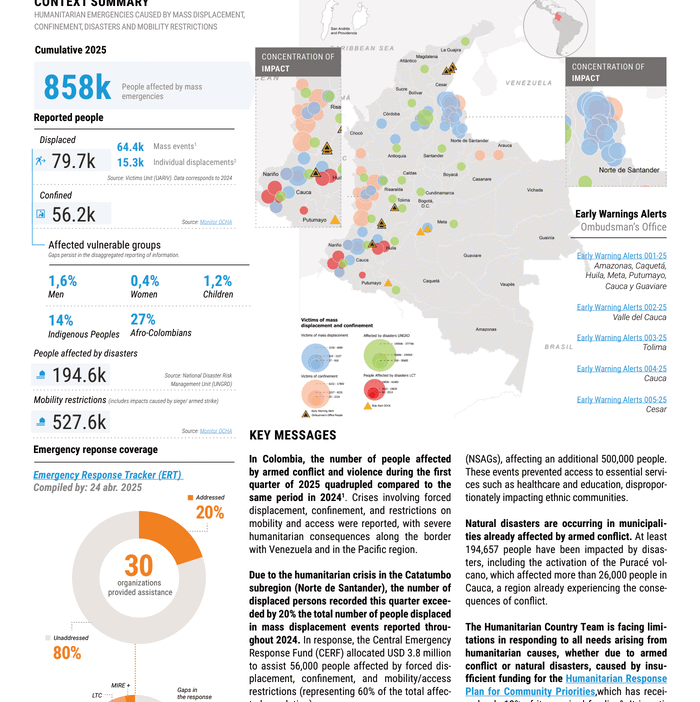In Colombia, the number of people affected by armed conflict and violence during the first quarter of 2025 quadrupled compared to the same period in 2024. Crises involving forced displacement, confinement, and restrictions on mobility and access were reported, with severe humanitarian consequences along the border with Venezuela and in the Pacific region.
Due to the humanitarian crisis in the Catatumbo subregion (Norte de Santander), the number of displaced persons recorded this quarter exceeded by 20% the total number of people displaced in mass displacement events reported throughout 2024. In response, the Central Emergency Response Fund (CERF) allocated USD 3.8 million to assist 56,000 people affected by forced displacement, confinement, and mobility/access restrictions (representing 60% of the total affected population).
Cauca and Chocó account for the highest number of confinement emergencies. In Chocó, the humanitarian situation worsened due to sieges/armed strikes imposed by Non-State Armed Groups (NSAGs), affecting an additional 500,000 people. These events prevented access to essential services such as healthcare and education, disproportionately impacting ethnic communities.
Natural disasters are occurring in municipalities already affected by armed conflict. At least 194,657 people have been impacted by disasters, including the activation of the Puracé volcano, which affected more than 26,000 people in Cauca, a region already experiencing the consequences of conflict.
The Humanitarian Country Team is facing limitations in responding to all needs arising from humanitarian causes, whether due to armed conflict or natural disasters, caused by insufficient funding for the Humanitarian Response Plan for Community Priorities, which has received only 12% of its required funding. It is estimated that at least 1.4 million people could be left without assistance due to the funding gap, mainly as a result of the freeze on U.S. government funding.



